AIA announces the 2016 COTE Top Ten Green Projects
By Justine Testado|
Friday, Apr 22, 2016
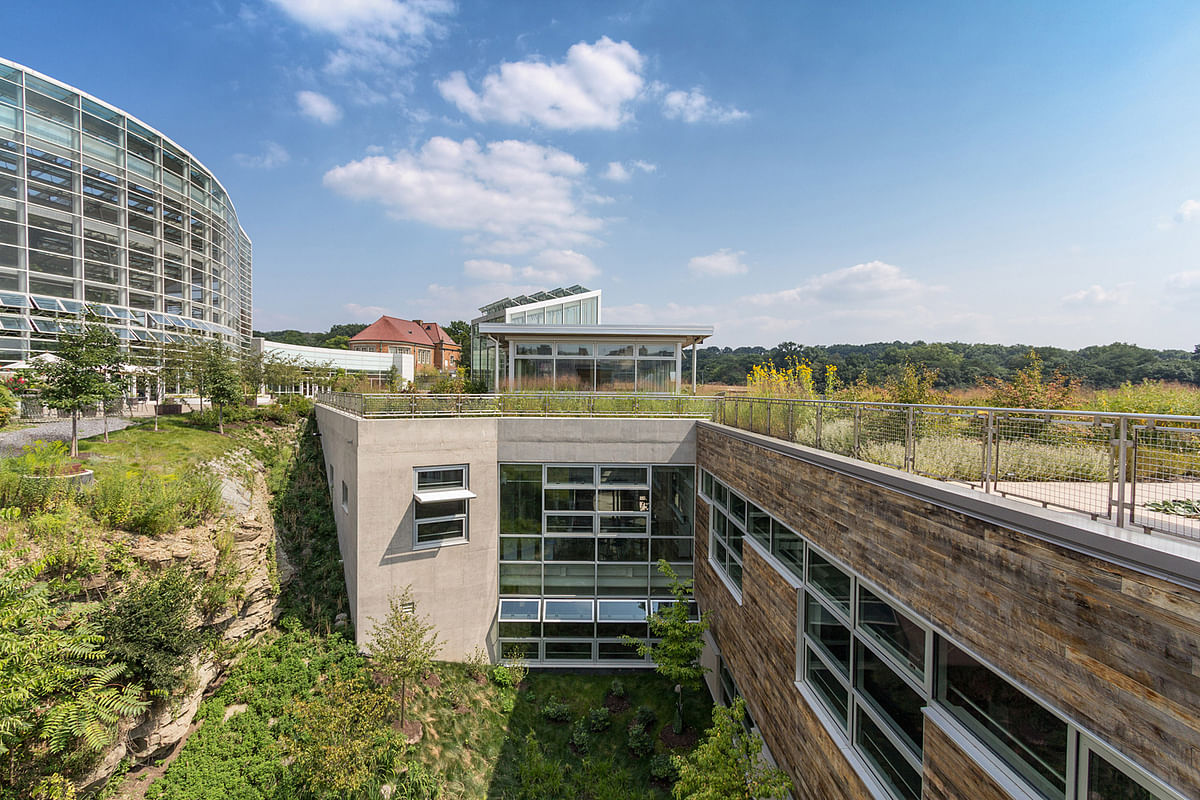
Related
Just in time for Earth Day, the AIA and the Committee on the Environment (COTE) revealed a new set of Top Ten Green Projects for 2016. Over the last two decades, the annual awards program is considered to be the profession's most rigorous awards program for sustainable design excellence throughout the U.S.
The jury chose the projects that best convey a thoroughly integrated approach to architecture, natural systems, and technology. Other factors taken into account include the project's positive contribution to their communities, improving comfort for building occupants, and the design strategies used to reduce environmental impact.
EHDD, ZGF Architects, and Lake|Flato Architects are a few of the winning designers this year. The Edith Green – Wendell Wyatt Federal Building by SERA Architects and Cutler Anderson Architects scooped the Top Ten Plus Project title, which It honors a previous Top Ten Green Project recipient that demonstrates through quantifiable metrics the impact of sustainable design and technology. All the winning projects will be honored during the 2016 AIA Convention in Philadelphia.
Have a look at this year's winners.
(cover image) Center for Sustainable Landscapes (CSL); Pittsburgh by The Design Alliance Architects
Project summary: “The CSL is an education, research and administration facility at Phipps Conservatory and Botanical Gardens. Designed to be the greenest building in the world, it generates all of its own energy and treats all storm and sanitary water captured on-site. The CSL is the first and only building to meet four of the highest green certifications: the Living Building Challenge, LEED Platinum, WELL Building Platinum, and Four-Stars Sustainable SITES. As an integral part of the Phipps visitor experience, the CSL focuses attention on the important intersection between the built and natural environments, demonstrating that human and environmental health are inextricably connected.”
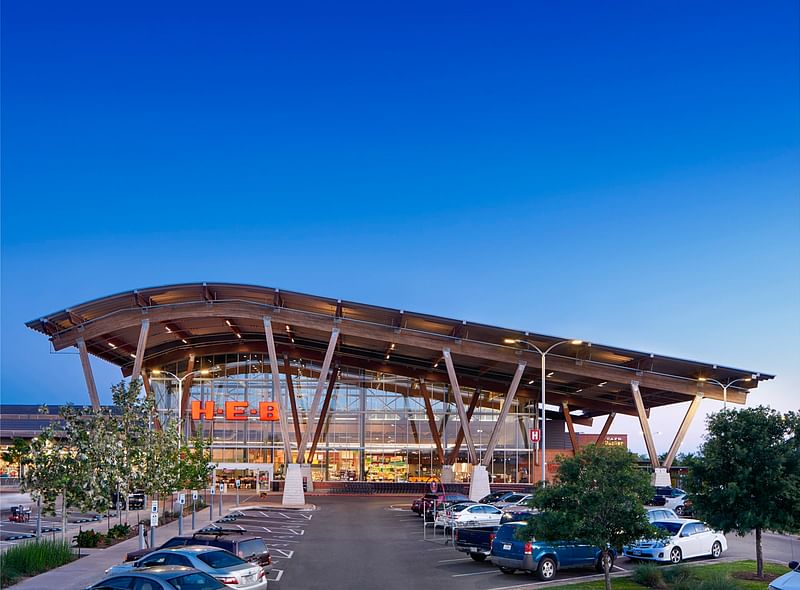
H-E-B at Mueller; Austin, TX by Lake|Flato Architects, H-E-B Design + Construction, Selser Schaefer Architects
Project summary: “H-E-B at Mueller is an 83,587-square-foot LEED Gold and Austin Energy Green Building 4-Stars retail store and fresh food market, including a pharmacy, café, community meeting room, outdoor gathering spaces, and fuel station. It serves 16 neighborhoods and is located in Mueller, a sustainable, mixed-use urban Austin community. Strategies include a collaborative research, goal-setting and design process; integrated chilled water HVAC and refrigeration systems; the first North American supermarket propane refrigeration system; optimized daylighting; 169 kW roof-top solar array; electric vehicle charging; all LED lighting; and reclaimed water use for landscape irrigation, toilets, and cooling tower make-up water.”
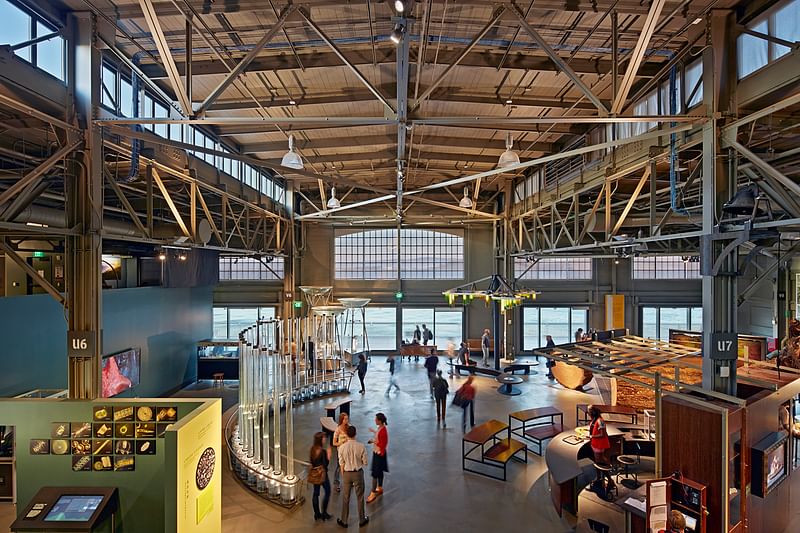
Exploratorium at Pier 15; San Francisco by EHDD
Project summary: “The Exploratorium is an interactive science museum that also demonstrates innovation and sustainability in its design and construction. The building takes advantage of the historic pier shed’s natural lighting and the 800-foot-long roof provided room for a 1.3 megawatt photovoltaic array. The water of the bay is used for cooling and heating. Materials were used that are both sustainable and durable enough to withstand a harsh maritime climate. The project is certified LEED Platinum and is close to reaching its goal of being the country’s largest Net Zero energy museum and an industry model for what is possible in contemporary museums.”
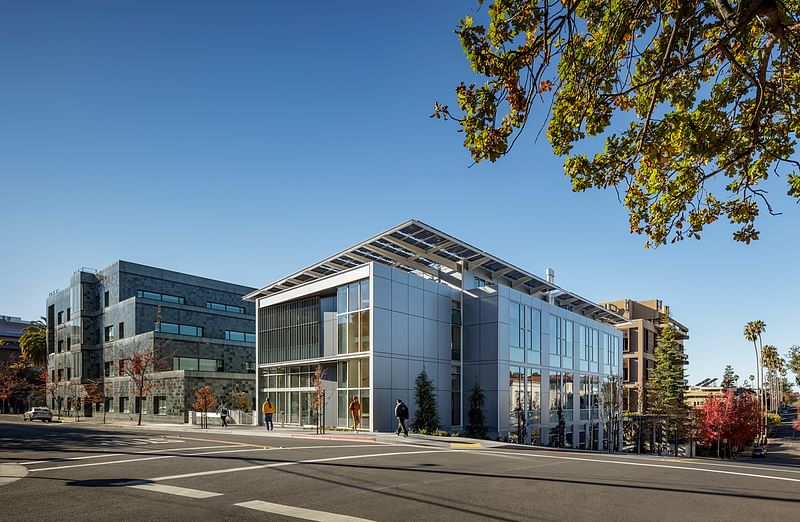
Jacobs Institute for Design Innovation; Berkeley, CA by Leddy Maytum Stacy Architects
Project summary: “Founded on the conviction that design can help address some of society’s most pressing challenges, the Jacobs Institute for Design Innovation at UC Berkeley is devoted to introducing sustainable design innovation at the core of university life. The project provides a new interdisciplinary hub for students and teachers from across the university who work at the intersection of design and technology. It is designed as both a collaborative, project-based educational space and a symbol to the region of the University’s commitment to sustainable innovation, modelling high-density / low-carbon living and learning by reducing energy use 90% below national baseline.”
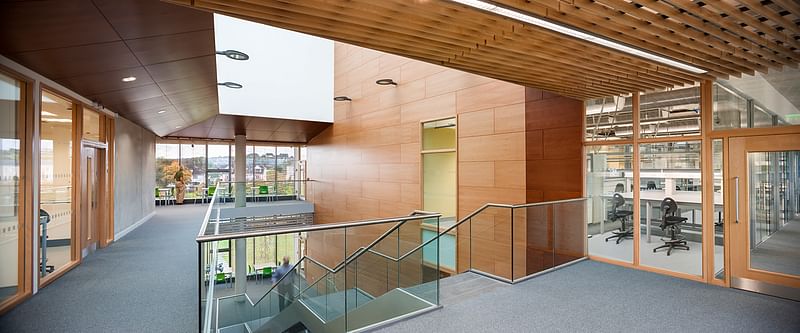
Biosciences Research Building (BRB); Galway, Ireland by Payette and Reddy Architecture + Urbanism
Project summary: “The design of the BRB embraces the moderate climate of Ireland. By locating low-load spaces along the perimeter of the building, the project is able to take advantage of natural ventilation as the sole conditioning strategy for the majority of the year and is supplemented less than 10% of the year with radiant heating. Due to this approach, 45% of this intensive research building is able to function without mechanical ventilation. This is an extremely simple, yet radical approach and is rarely implemented to even a modest extent in similar laboratories in comparable U.S. climates.”

RELATED NEWS AIA selects the 2015 COTE Top Ten Green Projects
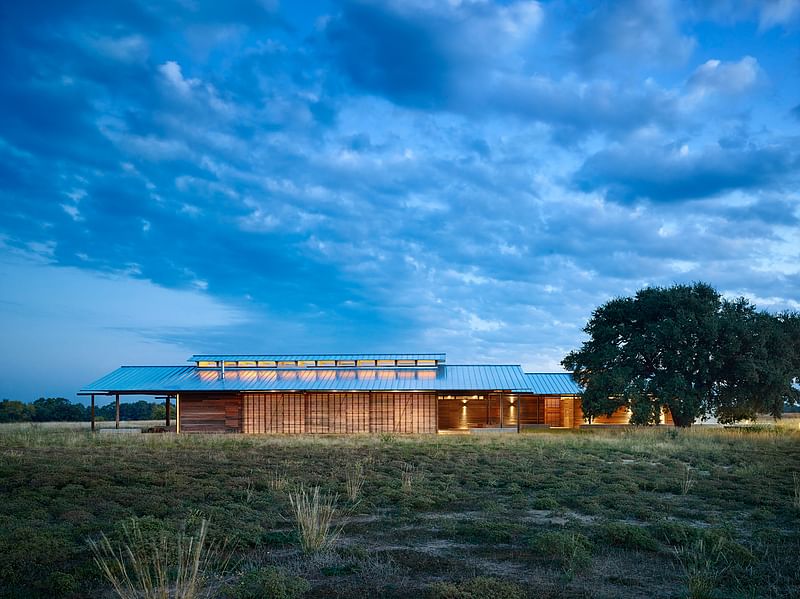
The Dixon Water Foundation Josey Pavilion; Decatur, TX by Lake|Flato Architects
Project summary: “The Josey Pavilion is a multi-functional education and meeting center that supports the mission of the Dixon Water Foundation to promote healthy watersheds through sustainable land management. Traditionally livestock has caused more harm than good by overgrazing and not allowing native prairies to play their important role in habitat and watershed protection, and carbon sequestration. As a certified Living Building, the Josey Pavilion facilitates a deeper understanding of how grazing livestock as well as the built environment can work to do more good than harm. Just like the Heritage Live Oak that defines the site, the building tempers the climate and enhances visitor experience by shading the sun, blocking the wind, and providing protected views.”
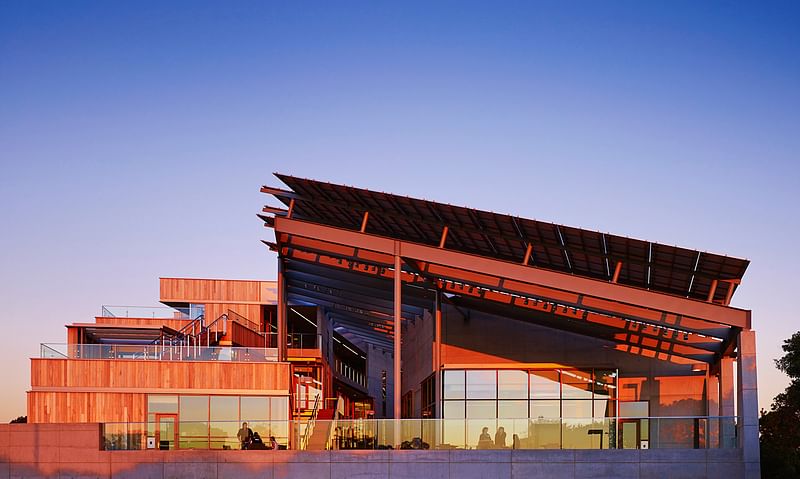
The J. Craig Venter Institute; San Diego by ZGF Architects LLP
Project summary: “This not-for-profit research institute, dedicated to the advancement of the science of genomics, was in need of a permanent West Coast home. Their commitment to environmental stewardship led to challenging the architects to design a net-zero energy laboratory building, the first in the U.S. The result is a LEED-Platinum certified, 44,607-square-foot building comprised of a wet laboratory wing and an office / dry laboratory wing surrounding a central courtyard, all above a partially below-grade parking structure for 112 cars. The holistic approach to the design revolved around energy performance, water conservation, and sustainable materials.”
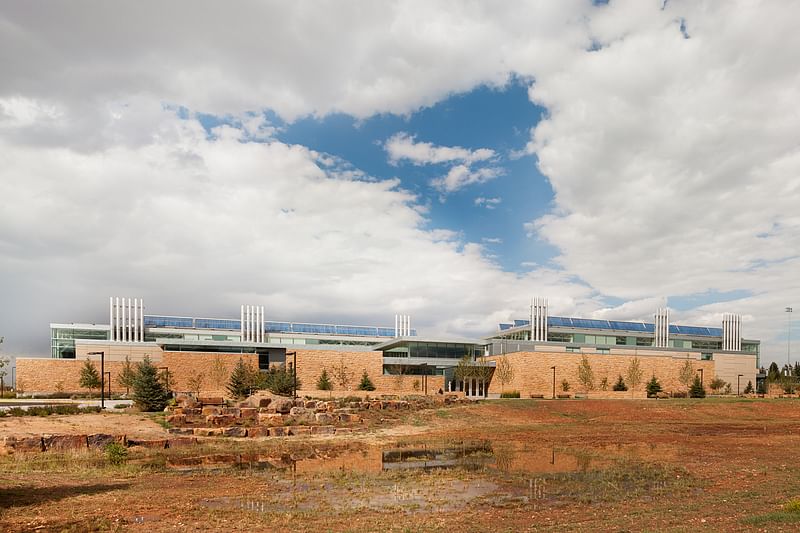
University of Wyoming - Visual Arts Facility; Laramie, WY by Hacker Architects and Malone Belton Able PC
Project summary: “The Visual Arts Facility (VAF) consolidates the fine arts program from its scattered locations throughout the campus. The building provides a teaching and learning environment that is both state-of-the-art in occupational safety and in its concern for discharge of pollutants from building. The roof area is fitted with one of the largest solar evacuated tube installations in the U.S. Heat flows from the evacuated tubes to support the hydronic radiant floors, domestic hot water, and pretreat outside air for ventilation. The building was oriented and shaped through a process of studying the sun’s interaction with interior spaces, simultaneously distributing reflected light while eliminating solar gain.”

Rene Cazenave Apartments; San Francisco by Leddy Maytum Stacy Architects and Saida + Sullivan Design Partners, Associated Architect
Project summary: “This supportive housing for formerly chronically homeless individuals replaces a former parking lot and freeway off-ramp with a high density, transit oriented, and healthy living alternative. Filtered ventilation, low emitting materials, ample daylight and views combine to aid the residents, many with mental and physical disabilities. Energy costs for the residents and non-profit owner are minimized by a combination of high efficiency lighting and hydronic heating, a continuously insulated rain-screen building envelope and a roof top solar canopy with both hot water and photovoltaic panels. Water is carefully managed by a vegetated roof, smart irrigation, a courtyard storm water tank and reclaimed water piping.”
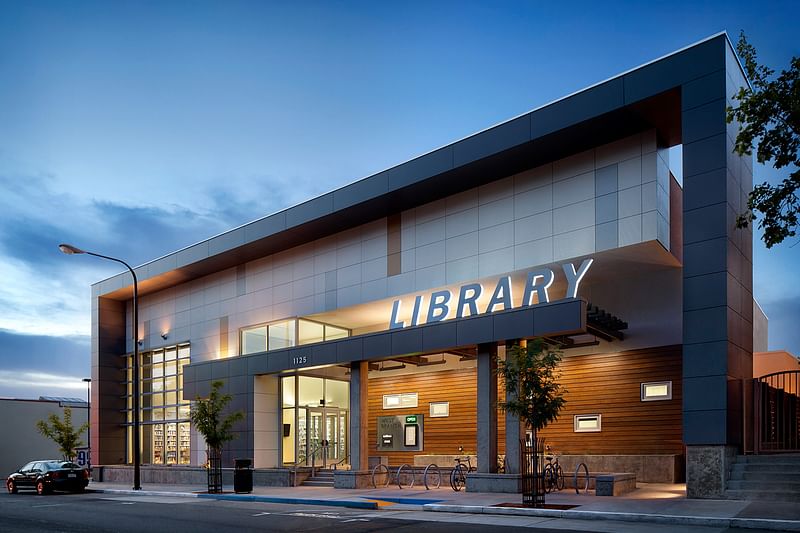
West Branch of the Berkeley Public Library; Berkeley, CA by Harley Ellis Devereaux
Project summary: “The new 9,500-square-foot West Branch of the Berkeley Public Library is the first certified Living Building Challenge zero net energy public library in California. The building’s energy footprint was minimized through integrated strategies for daylighting (the building is 97% daylit), natural ventilation and a high performance building envelope. An innovative wind chimney provides cross-ventilation while protecting the library interior from street noise. Renewable energy on site includes photovoltaic panels and solar thermal panels for radiant heating and cooling and domestic hot water. The library exceeds the 2030 Challenge and complies with Berkeley’s recently-enacted Climate Action Plan.”
2016 Top Ten Plus Project:
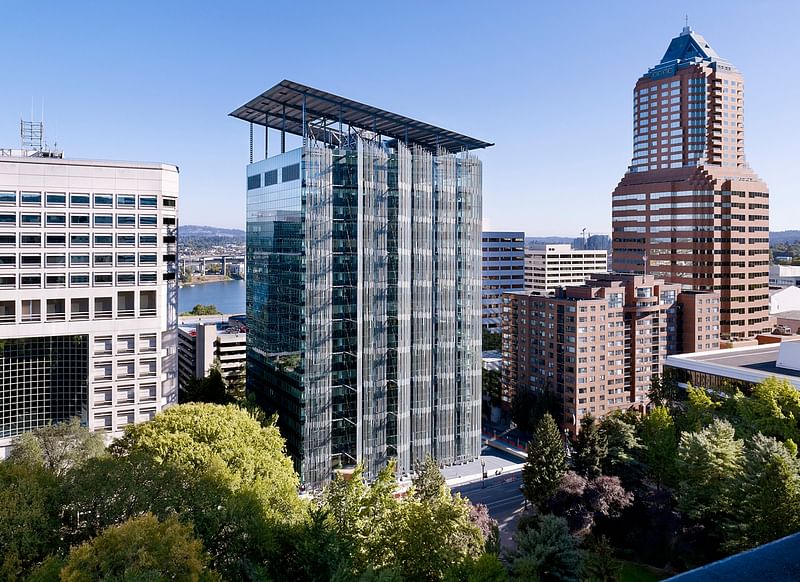
The Edith Green – Wendell Wyatt Federal Building by SERA Architects and Cutler Anderson Architects
Project excerpt: “The Edith Green-Wendell Wyatt (EGWW) Federal Building is an 18-story, 512,474 sf office tower in downtown Portland, Oregon. Originally built in 1974, the building received funding from the American Recovery and Reinvestment Act to undergo a major renovation to replace outdated equipment and systems. This funding stipulated the project must meet the stringent energy and water conservation requirements of the Energy Independence and Security Act (EISA).”
The 2016 jury included: Larry Strain, FAIA, LEED AP, Siegel & Strain Architects; Luke Leung, PE, LEED Fellow, Skidmore, Owings & Merrill LLP; Judith Heerwagen, PhD, U.S. General Services Administration; Margaret Montgomery, FAIA, LEED AP, NBBJ; and Anne Fougeron, FAIA, Fougeron Architecture.


Share
0 Comments
Comment as :